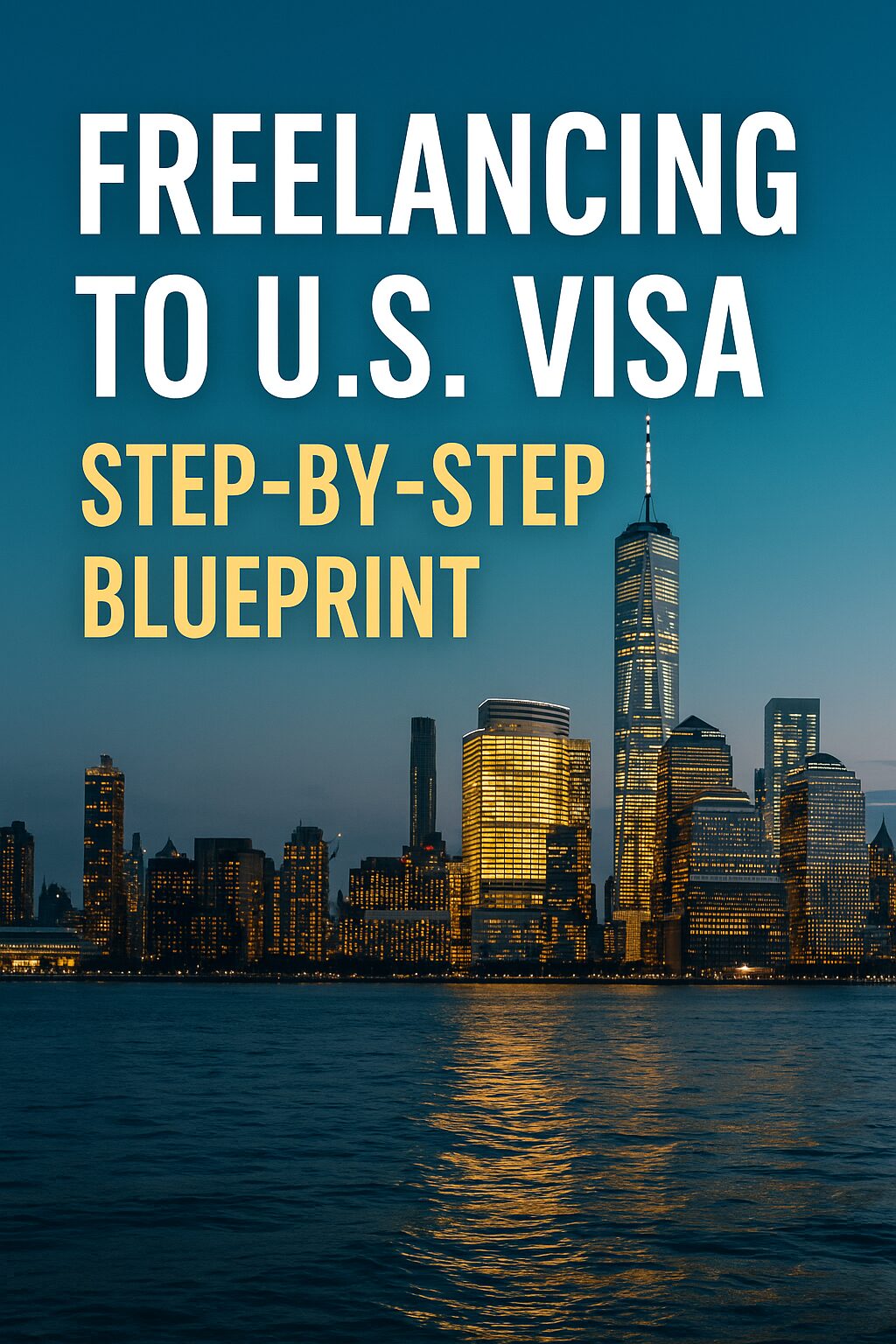Breaking into the U.S. as a freelancer with big goals? Whether you’re an artist, engineer, or digital nomad, freelancing can be the bridge to a long-term visa. This guide will show you how to use your freelance career as a launchpad to secure an O-1 or E-2 visa—legally, strategically, and confidently.
1. Understand the Purpose of Each Visa
- O-1 Visa: For individuals with extraordinary ability in arts, sciences, education, business, or athletics.
- E-2 Visa: For entrepreneurs and investors from treaty countries investing in a U.S. business.
If you freelance with the intent to prove expertise (O-1) or build a business (E-2), this path may be right for you.
2. Start Building a Freelance Portfolio That Matters
Not all freelance work helps your visa case. Choose projects that:
- Have international or U.S.-based clients
- Include media mentions or awards
- Show high earnings and business growth
- Involve prestigious collaborations
📌 Example: A graphic designer with 10+ published magazine covers and international clients has stronger proof for an O-1.
3. Set Up a U.S.-Compliant Business Structure
For E-2 applicants:
- Set up an LLC or C-Corp in a U.S. state (Delaware or Wyoming are popular)
- Open a U.S. business bank account
- Invest a substantial amount in the business (usually $50K+)
- Prepare a business plan, invoices, and income statements
For O-1 applicants:
- Your freelance business should operate like a personal brand
- Your work must be well-documented and public-facing
4. Document Everything from Day One
Start a digital folder with:
- Contracts and invoices
- Bank statements
- Client testimonials
- Awards or mentions
- Media coverage (screenshots or PDFs)
📌 These documents become crucial for proving your qualifications later.
5. Work with a Visa-Savvy Immigration Attorney
You can begin alone, but visa transition gets technical fast. A qualified attorney can:
- Structure your freelance work properly
- Help position your business or achievements for visa approval
- Prevent costly mistakes (like violating immigration rules)
6. Avoid Freelancing While on Ineligible Visas
Do not freelance in the U.S. while on:
- B1/B2 tourist visas
- ESTA visa waiver
- F-1 (unless authorized via CPT/OPT)
Unauthorized work can lead to bans or visa rejection.
7. Track Your Success Metrics
Officers care about real impact. Keep track of:
- Income earned
- Media appearances
- Testimonials and reach
- Notable clients or collaborations
Make your story quantifiable.
8. Show Future Intent with a Clear Vision
Your freelance story must align with long-term visa goals.
- Want an O-1? Show extraordinary ability and future work in the U.S.
- Want an E-2? Prove your business can grow and create jobs.
Include a business roadmap or 2-year forecast.
9. Real Examples of Freelance-to-Visa Success
- A YouTube filmmaker with millions of views and brand deals → O-1 visa
- A UX designer who launched a U.S. LLC and hired a local contractor → E-2 visa
Success is possible—but only with strategy and proof.
10. Final Tip: Stay Consistent and Patient
Visa-based freelancing is not overnight success. But with planning, documentation, and persistence—you’re building your immigration case every day.
